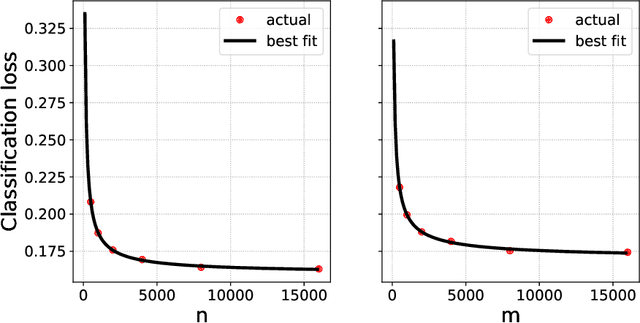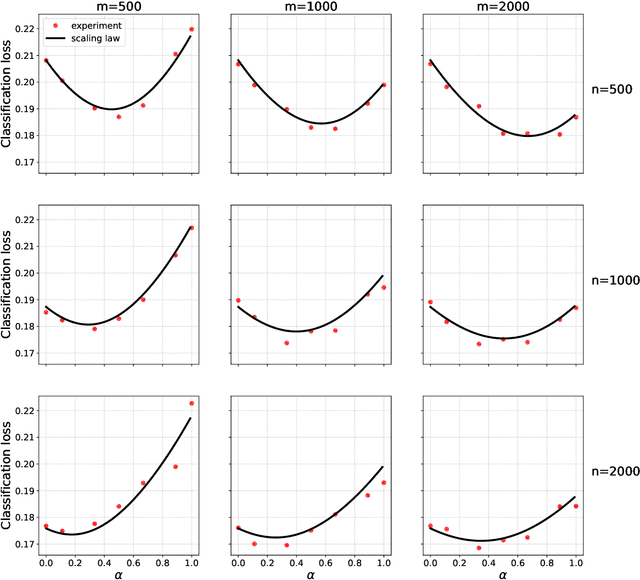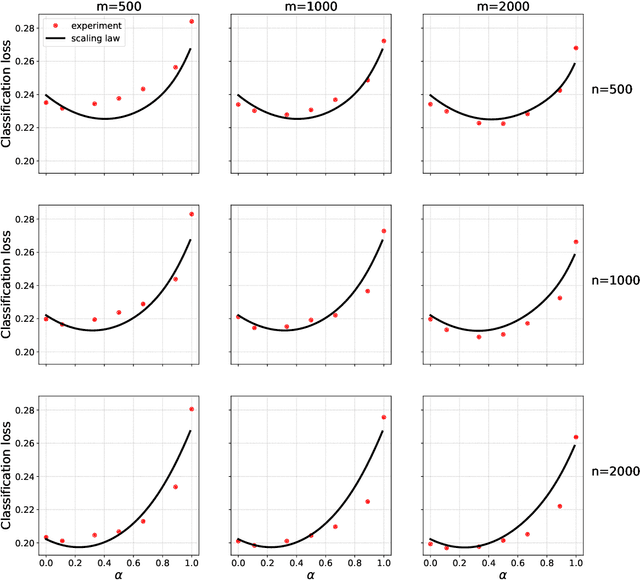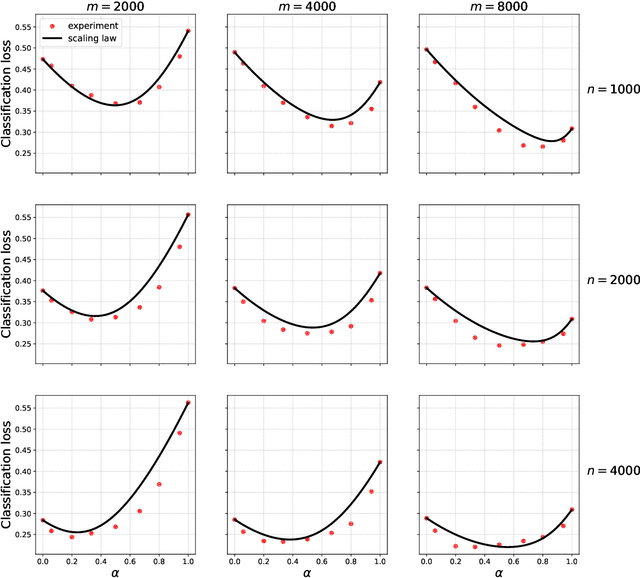Eren Sasoglu
Scaling laws for learning with real and surrogate data
Feb 06, 2024



Abstract:Collecting large quantities of high-quality data is often prohibitively expensive or impractical, and a crucial bottleneck in machine learning. One may instead augment a small set of $n$ data points from the target distribution with data from more accessible sources like public datasets, data collected under different circumstances, or synthesized by generative models. Blurring distinctions, we refer to such data as `surrogate data'. We define a simple scheme for integrating surrogate data into training and use both theoretical models and empirical studies to explore its behavior. Our main findings are: $(i)$ Integrating surrogate data can significantly reduce the test error on the original distribution; $(ii)$ In order to reap this benefit, it is crucial to use optimally weighted empirical risk minimization; $(iii)$ The test error of models trained on mixtures of real and surrogate data is well described by a scaling law. This can be used to predict the optimal weighting and the gain from surrogate data.
 Add to Chrome
Add to Chrome Add to Firefox
Add to Firefox Add to Edge
Add to Edge